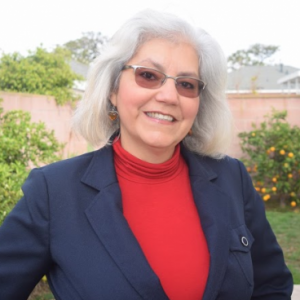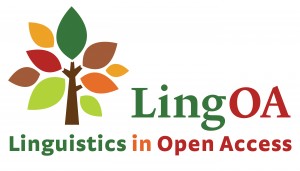La tradicción histórica del español de California
DOI:
https://doi.org/10.32870/vel.vi1.10Parole chiave:
desplazamiento lingüístico, lenguas en contacto, bilingüismo.Abstract
El estado de California siempre se ha caracterizado por su riqueza lingüística, aun antes de la llegada de los grupos colonizadores de origen europeo. En pleno siglo XXI, California se distingue por su plurilingüismo; sin embargo, después del inglés, el español es la lengua más empleada. En este ensayo se describe la realidad lingüística de la California decimonónica, con el fin de identificar cuándo el español y el inglés entran en contacto y cuáles elementos influyeron en la pérdida de las lenguas indígenas ante la expansión de otras lenguas. Tomo en consideración también los elementos que influyeron en la decisión de aprender la lengua invasora. Para evaluar el peso que esos rasgos tienen en la selección de la lengua comunitaria se analizan las diferencias demográficas, culturales y de aislamiento o marginalización en la sociedad de la época.
Downloads
Metriche
Riferimenti bibliografici
Almaguer, T. (l994). Racial Fault Lines. The Historical Origins of White Supremacy in California. Berkeley: Universiıy of Galifornia Press.
APIAHE. (2009). California Speaks: Language Qiversity and Englih Proficency by Legislative District. (s.f.) Recuperado el h0 de abril del 20l2, en http://www.apiahf.org/re- sources/resources-database/california- speaks-language-diversity-and-english- proficiency-legislativ
Blanco, A. (l97l). La lengua española en la historia de California. Madrid: Ediciones Gultura Hispánica.
Gastañeda, A. (2000). Hispanas and Hispanos in a Mestizo Society. Magazine of History, 29-33.
Farnsworth, P. & fackson, R. H. (l995). Gultural, Economic, and Demographic Ghange in the Missions of Alta Galifornia: the Gase of Nuestra Señora de la Soledad. En E. A. Langer, The New Latin American Mission History (pp. l09-l29). Lincoln: Nebraska University Press.
Gómez, L. (2009). Opposite One Drop Rules. Mexican American, African Americans, and the Need to Reconceive. Turn-of-the-Twentieth- Century Race Relations. Boulder: Paradigm.
Hackel, S. W. (l997). The Staff of Leadership: Indian Authoriıy in the Missions of Alta Galifornia. The William and Mary Quarterly, 347-376.
Hilton, S. (l992). La Alta California española. Madrid: MAPERE.
Hurtado, A. H. (l995). Introduction to the Bison Books Edition. En B. D. Wilson, The Indian of Southern California in 1852 (pp. IX-xvi). San Marino: University of Nebraska Press.
Kanellos, N. y H. Marıell. (2000). Hispanic Periodicals in the United States. Origins to 1960: A Brief History and Comprehensive Bibliography. Huston: Arte Público Press.
Lara, L. E. (2008). Para la historia de la expansión del español en México. Nueva Revista de Filología Hispánica (56), 297-362. Lastra, Y. (2003). Sociolingüística para hispano- americanos. México, D.E.: El Golegio de
México.
Mason, W. M. (l998). the Census of 1790: A Demographic History of Colonial California. Novato, GA: Ballena Press.
Mayer, R. (l978). Los Angeles: A Chronological and Qocumentary History: 1542-1976. New York: Oceana Publications.
McDonnell, J. E. (2008). Juan Briones of Nineteenth-Century California. Tucson: The University of Arizona Press.
Menchaca, M. (200l). Recovering history, constructing race: The Indian, Black, and white roots of Mexican Americans. Austin: University of Texas Press.
Rivera, J.M. (2006). The Emergence of Mexican America: Recovering Stories of Mexican People- hood in U.S. Culture. New York: New York University Press.
Romney, L. (20l3, 7 de abril). Archie Thompson, l9l9-20l3: Yurok elder who kept tr bal tongue alive. Los Angeles Times, p. A34.
Rumbauı, R. D. (2006). Linguistic Life Expectancies: Immigrant Language Retention in Southern Galifornia. Populatton and Development Review, 447-460.
Sapiens, A. (l979). Spanish in California: A Historical Perspective. Journal of Communication, 73-78.
Seliger, H. y R. M. Vago (l99l). First Language Attrition. Cambridge: Cambridge University Press.
Servin, M. P. (l973). California‘s Hispanic Heritage. The Journal of San Diego History, l-9.
Silva-Corvalán, G. (l997). El español hablado en Los Angeles: Aspectos socio- lingüísticos. En M. y. Colombi, La enseñanza del español a hispanohablantes. Boston: Houghton Mifflin.
Tinker Salas, M. (20l0). A la sombra de las águilas. Sonora y la transformación de la frontera durante el Porfiriato. México: Fondo de Gultura Económica.
Valdés, G. J. (2006). Developing Minority Language Resources: The Case of Spanish in California. Tonawanda, NY: Multilingual Matters Ltd.
Walters, M. R. (2009). The New Americans: a guide to immigration since 1965. Cambridge: Harvard University Press.













